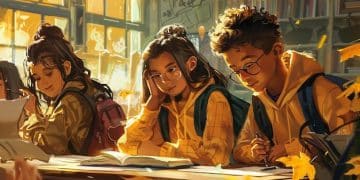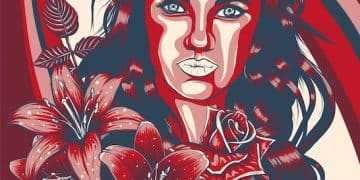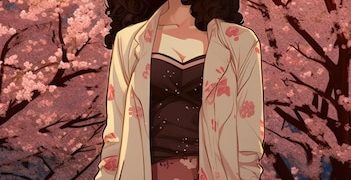Unveiling the Magic: A Comprehensive Review of Shojo Manga
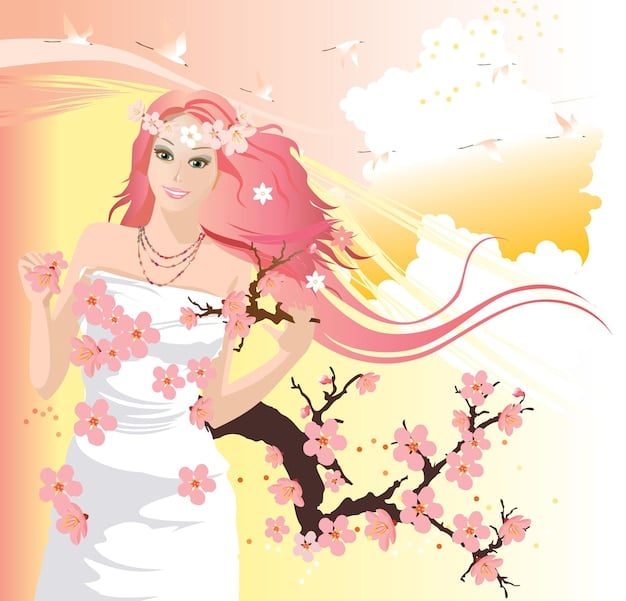
Shojo manga, aimed primarily at a young female audience, encompasses a wide array of themes and art styles, offering compelling narratives that delve into romance, friendship, personal growth, and fantastical adventures, making it a crucial part of manga culture.
Dive into the captivating world of shojo manga, where stories unfold with heartfelt emotions, stunning visuals, and themes that resonate deeply with its audience. Whether you’re a seasoned reader or new to the genre, understanding what makes shojo manga special is essential.
What is Shojo Manga? A Genre Deep Dive
Shojo manga, distinguished by its target demographic of young girls and women, transcends mere genre classification. It embodies a rich tapestry of storytelling, artistic expression, and thematic exploration, offering readers a diverse range of narratives tailored to their sensibilities.
Defining Characteristics of Shojo Manga
Shojo manga is characterized by its focus on relationships, emotions, and personal development. While romance often takes center stage, themes of friendship, family, and self-discovery are also prevalent. The art style typically features large, expressive eyes, delicate lines, and detailed backgrounds, creating a visually appealing experience for readers.
Common Themes in Shojo Manga
The thematic landscape of shojo manga is expansive, encompassing everything from high school romance to historical fantasy. Common themes include first love, overcoming obstacles, finding one’s identity, and the power of human connection. Stories often emphasize emotional depth and character growth, providing relatable and inspiring narratives for young readers.
- 💖 Romance: The cornerstone of many shojo manga series, exploring the complexities of love and relationships.
- 🤝 Friendship: Highlighting the importance of platonic bonds and the support they provide during challenging times.
- 🌟 Personal Growth: Depicting characters’ journeys of self-discovery and the development of their identities.
- ✨ Fantasy: Incorporating magical elements and otherworldly settings to enhance storytelling.
In summary, shojo manga is a diverse and dynamic genre that captures the hearts of readers with its emotional depth, relatable characters, and captivating storylines. It offers a unique and engaging perspective on the world, celebrating the power of relationships and the importance of personal growth.
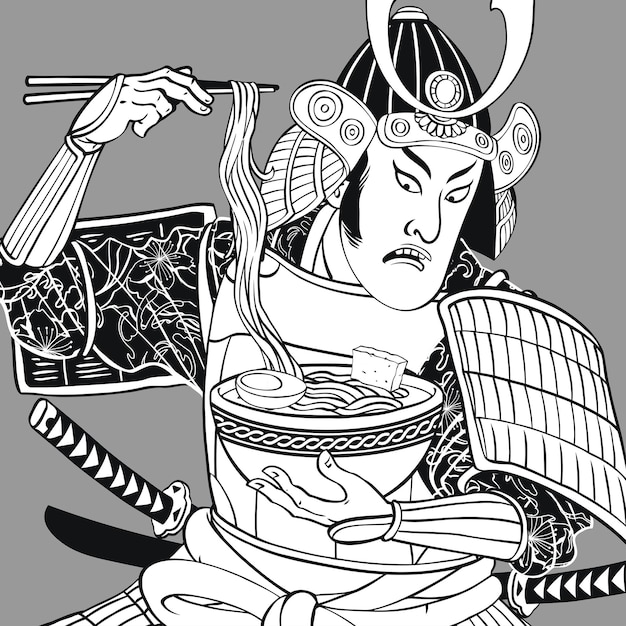
History and Evolution of Shojo Manga
The evolution of shojo manga mirrors the changing societal landscape and the evolving expectations of its target audience. From its early origins to its contemporary form, shojo manga has undergone significant transformations, adapting to new trends and pushing creative boundaries.
Early Origins of Shojo Manga
The roots of shojo manga can be traced back to the early 20th century, with pioneers like Makoto Takahashi laying the groundwork for the genre. These early works often featured idealized portrayals of young girls and emphasized themes of innocence and virtue.
The Emergence of Modern Shojo Manga
The modern era of shojo manga began in the post-World War II period, with influential artists like Osamu Tezuka introducing new storytelling techniques and character designs. The creation of “Ribon no Kishi” (Princess Knight) by Tezuka is often cited as a pivotal moment, marking the beginning of more complex and nuanced narratives in shojo manga.
Key Milestones in Shojo Manga History
- 👸 1950s-1960s: Development of foundational art styles and narrative structures.
- 🌸 1970s-1980s: Diversification of themes to include science fiction, fantasy, and historical settings.
- 📱 1990s-2000s: Rise of influential series that gained international recognition, such as “Sailor Moon” and “Fruits Basket.”
- 🌐 2010s-Present: Continued adaptation to digital platforms and globalization of the manga industry.
In essence, the history of shojo manga is a testament to its adaptability and enduring appeal. By continually evolving to meet the needs and interests of its audience, shojo manga has remained a vibrant and influential force in the world of manga.
Popular Shojo Manga Series
Exploring popular shojo manga series offers a glimpse into the diverse and captivating narratives that have captured the hearts of readers worldwide. These series often feature strong female leads, compelling romantic relationships, and themes of personal growth and self-discovery.
“Fruits Basket”
“Fruits Basket” by Natsuki Takaya is a beloved series known for its emotional depth and heartwarming story. The series follows Tohru Honda, an orphaned high school student who discovers that the members of the Sohma family are possessed by the animals of the Chinese zodiac. Through her kindness and empathy, Tohru helps the Sohma family members overcome their personal struggles and break the curse that binds them.
“Sailor Moon”
“Sailor Moon” by Naoko Takeuchi is an iconic series that revolutionized the magical girl genre. The series follows Usagi Tsukino, a clumsy and ordinary schoolgirl who transforms into Sailor Moon, a powerful warrior destined to protect Earth from evil. With the help of her fellow Sailor Guardians, Usagi battles dark forces and discovers her true potential.
Other Notable Shojo Manga Series
- 💘 “Ouran High School Host Club”: A comedic series that explores themes of gender roles and social dynamics.
- 🕰️ “Yona of the Dawn”: A historical fantasy series that follows a princess on a quest for revenge and redemption.
- 🎶 “Nana”: A drama series that delves into the complexities of friendship, love, and pursuing one’s dreams.
Ultimately, popular shojo manga series provide readers with engaging and inspiring narratives that resonate on a deep emotional level. They celebrate the power of relationships, the importance of personal growth, and the enduring appeal of captivating storytelling.
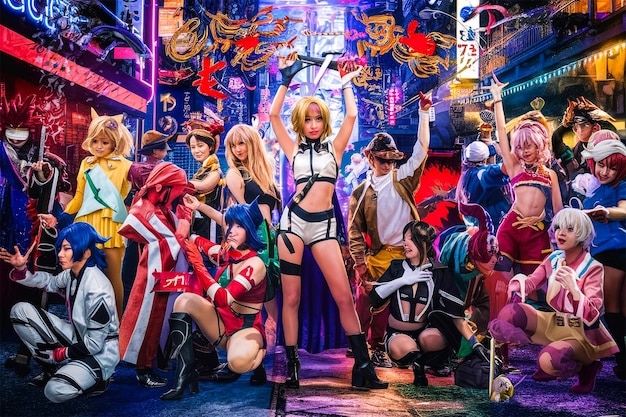
Themes and Tropes in Shojo Manga
Understanding the common themes and tropes in shojo manga enhances appreciation for the genre’s unique storytelling conventions. These recurring elements often explore the complexities of relationships, the challenges of adolescence, and the pursuit of personal fulfillment.
Common Themes in Shojo Manga
Shojo manga frequently addresses themes such as first love, self-discovery, and the importance of friendship. These themes resonate with young readers as they navigate their own experiences and relationships. Stories often emphasize the emotional journeys of characters and the challenges they face in overcoming obstacles.
Popular Tropes in Shojo Manga
Various tropes are commonly found in shojo manga, including the “tsundere” character (a person who is initially cold but gradually reveals a warmer side), the “childhood friend” romance, and the “love triangle.” These tropes add familiar elements to the narratives, while still allowing for unique and creative storytelling.
Exploring the Impact of Tropes
The impact of tropes in shojo manga is twofold. On one hand, they provide a sense of familiarity and comfort for readers. On the other hand, they can be used to subvert expectations and challenge conventional storytelling. The skillful use of tropes can enhance the emotional impact of a story and create memorable character dynamics.
- 🎭 Tsundere: The character who is initially cold but gradually reveals a softer side.
- 👧 Childhood Friend: A romantic interest who has known the protagonist since childhood.
- 💔 Love Triangle: A situation where the protagonist is torn between two potential romantic partners.
In summation, the themes and tropes in shojo manga contribute to its unique identity and appeal. Understanding these elements allows readers to appreciate the genre’s rich storytelling conventions and the emotional depth of its characters.
The Art Style of Shojo Manga
The art style of shojo manga is a defining characteristic that contributes significantly to the genre’s aesthetic appeal. With its emphasis on expressive characters, intricate details, and visually dynamic compositions, the art style of shojo manga creates an immersive and engaging reading experience.
Key Features of Shojo Manga Art
Shojo manga art is distinguished by large, expressive eyes, delicate lines, and detailed backgrounds. Characters often have stylized hairstyles and clothing, reflecting current fashion trends or unique character traits. The use of “sparkle effects” and other visual enhancements adds to the overall aesthetic appeal.
Influences on Shojo Manga Art Style
The art style of shojo manga has been influenced by various sources, including classic European illustrations, contemporary fashion design, and traditional Japanese art. These influences have contributed to the development of a unique and recognizable style that continues to evolve.
The Evolution of Shojo Manga Art
The evolution of shojo manga art reflects the changing aesthetic preferences of its audience. Early shojo manga art often featured more simplified character designs and less detailed backgrounds. Over time, the art style has become more complex and expressive, with greater emphasis on realism and emotional impact.
- ✨ Expressive Eyes: Large and emotive, conveying a wide range of feelings.
- 🌸 Delicate Lines: Fine and detailed, creating a sense of elegance and refinement.
- 🎀 Stylized Designs: Unique hairstyles and clothing that reflect character traits and fashion trends.
In conclusion, the art style of shojo manga is a critical component of its appeal. Its expressive characters, intricate details, and visually dynamic compositions create an immersive and engaging reading experience that continues to captivate audiences worldwide.
Why Shojo Manga Remains Relevant
The enduring relevance of shojo manga can be attributed to its ability to address universal themes, resonate with readers on a deep emotional level, and continually adapt to changing societal norms and expectations. Its impact on culture and media is undeniable.
Addressing Universal Themes
Shojo manga explores universal themes such as love, friendship, and personal growth, which are relevant to readers of all ages and backgrounds. These themes provide a framework for exploring complex emotions and navigating the challenges of life.
Adapting to Changing Norms
Shojo manga has consistently adapted to changing societal norms and expectations, addressing contemporary issues such as gender equality, LGBTQ+ representation, and mental health. This adaptability ensures that shojo manga remains relevant and engaging for modern readers.
The Cultural Impact of Shojo Manga
The cultural impact of shojo manga is far-reaching, influencing fashion, music, and other forms of media. Many successful anime series and live-action adaptations are based on shojo manga, further expanding its influence and reach.
- 💖 Emotional Connection: Shojo manga creates a strong emotional connection with readers through its relatable characters and heartfelt storylines.
- 🌟 Influential Medium: Shojo manga has influenced various aspects of popular culture, from fashion trends to anime adaptations.
- 🌱 Continual Evolution: Shojo manga continues to evolve and adapt to meet the needs and interests of its audience.
In essence, shojo manga remains relevant because it addresses universal themes, adapts to changing norms, and exerts a profound cultural influence. Its ability to connect with readers on a deep emotional level ensures its continued popularity and significance.
| Key Point | Brief Description |
|---|---|
| 💖 Genre Definition | Shojo manga is aimed at young girls and women, focusing on relationships and emotions. |
| 🌟 Popular Series | “Fruits Basket” and “Sailor Moon” are iconic examples of shojo manga. |
| ✨ Art Style | Features expressive eyes and delicate lines, enhancing emotional impact. |
| 🌱 Relevance | Continues to adapt to societal norms, addressing themes like gender equality. |
Frequently Asked Questions About Shojo Manga
▼
Shojo manga is manga targeted towards a young female audience, typically focusing on relationships, emotions, and personal growth. It often features distinctive art styles with large, expressive eyes.
▼
“Sailor Moon,” “Fruits Basket,” “Ouran High School Host Club,” and “Yona of the Dawn” are popular examples of shojo manga. These series are known for their compelling stories and relatable characters.
▼
Shojo manga has evolved from simple narratives to complex stories addressing diverse themes. Art styles have also become more detailed, with a focus on emotional expression and contemporary issues.
▼
Common themes include first love, friendship, self-discovery, and overcoming obstacles. Many series emphasize the importance of emotional connections and personal development.
▼
Shojo manga remains relevant by addressing universal themes, adapting to societal changes, and influencing popular culture. It continues to resonate with readers through its emotional depth and relatable storytelling.
Conclusion
In summary, shojo manga continues to captivate audiences with its rich narratives, compelling characters, and beautiful art styles. Its ability to evolve and address relevant themes ensures its enduring appeal in the world of manga. Whether exploring classic series or discovering new gems, the world of shojo manga offers something for everyone.
